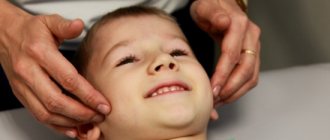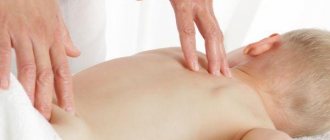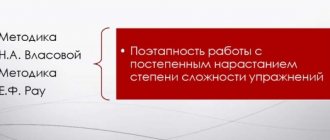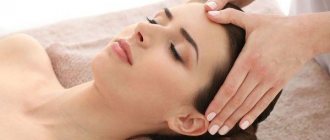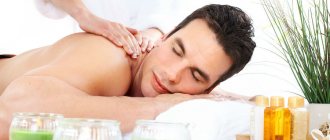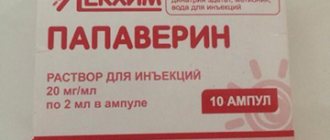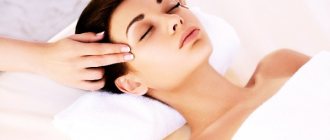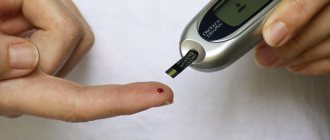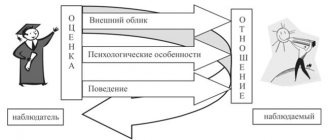Correction of dysarthria with massage in children
Speech therapy massage for various forms of dysarthria involves mechanical effects on various parts of the face and on the tongue. As a result, pathological symptoms in the peripheral part of the speech apparatus are eliminated, and muscle tone changes.
As a result, in the child, the strength of muscle spasms and their number decreases, and muscle tone normalizes with dysarthria (articulatory and facial muscles). The mobility of the speech organs is restored, blood flow in the soft tissues of the face and brain improves.
These factors help improve the quality of speech: it becomes smooth, expressive, and understandable to others. The baby begins to behave calmer and sleeps better.
Speech therapy massage is prescribed only by a speech therapist after a detailed examination. The specialist assesses the degree of the violation and, depending on this, selects an individual correction scheme.
Paresis
Massage for facial nerve paresis is prescribed after the patient has undergone a thorough examination, including consultations with a neurologist, ophthalmologist, and therapist. In this case, massage is prescribed in combination with therapeutic exercises. Facial massage for paresis improves blood circulation on the affected side of the face, restores muscle function, and prevents contractures.
The peculiarity of massage for this disease is that it is necessary to increase the muscle tone of the articulatory muscles. The first week of sessions is carried out only on the healthy part of the face. At the second stage, actions are redirected to the affected side, while limiting movements for the healthy area of the face.
The methods acceptable in this case include:
- stroking;
- very light vibrations;
- light friction;
- gentle kneading.
Contraindications
Speech therapy massage for children with dysarthria cannot be performed when the child has:
- rash, swelling of various types on the skin;
- exacerbation of herpes infection;
- colds, viral diseases;
- inflammatory processes of the oral cavity and lips - stomatitis, gingivitis, caries, fungal infection;
- inflammatory processes of nearby organs - conjunctivitis, rhinitis, lymphadenitis, furunculosis;
- cuts, abrasions, hematomas;
- severe chronic diseases - oncological, cardiovascular, hematological, neurological, psychiatric.
Massage with spoons
Massage with spoons is an effective way to correct speech defects. This type of massage is performed by a speech therapist or a parent with the participation of the child himself. The child is given 2 spoons in both hands, and he repeats the movements shown by the adult. All exercises are performed while reading poetry.
The poem contains instructions, describes the order and method of performing the exercise. Movements include rubbing, pressing, tapping with different parts of the spoon (handle, convex side, inner side)
Face massage
The correct sequence for a relaxing massage is as follows: first, apply to the face and lips, then to the tongue.
Facial massage for dysarthria involves rubbing, kneading, and stroking. Before the procedure, remove jewelry and keep your nails short. The first sessions are short, the duration gradually increases.
The classic version begins with kneading movements in the forehead area. The movements are smooth, from the central part towards the temples. Then stroking from the eyebrows to the hairline with the pads of all fingers.
You cannot press hard on the eyelids: all movements should be light, stroking. The direction is circular, clockwise.
In the cheek area, it is necessary to relax the muscles by stretching them from the mouth towards the temples, and from the cheekbones - downwards, towards the chin. After this, we move to the nose, smoothly rubbing the wings up and down, stroking the nasolabial fold in the direction from the nose to the corners of the lips.
Articulatory lip massage for dysarthria involves kneading with vibration movements, then rubbing from the middle of the lips to the corners. Then they rub the chin and stroke the ears.
When a child has facial asymmetry, different muscle tone on the left and right, pay more attention to the affected side to achieve normalization of muscle tone in dysarthria.
Massage using a probe
Before performing a massage yourself, purchase a special device to perform probe massage for dysarthria in children. The device is called a probe. Can be plastic or metal. The shapes of the probe are varied: from a ball to a snail, from a hatchet to a fungus.
Choose after consulting with your speech therapist. Probe massage of the tongue is effective for dysarthria in children. Before purchasing, consultation with a specialist is required.
- Pass the ball probe along the tongue along the muscles 10 times;
- Take a plastic probe, pass over the massage points on the tongue, move from the root of the tongue to the tip. Repeat 6-8 times;
- Smooth the transverse muscles of the tongue from root to tip. Repeat 6-8 times;
- Feel the “dimples” under the tongue with your finger or probe, make point turns counterclockwise. Do not continue massaging the points for more than 12 seconds. Repeat 3 times;
- Using light pressing movements, stroke your tongue from root to tip. Repeat the procedure several times. Iron the tongue on the sides, in the middle, on all sides;
- Massage your tongue with gauze; it is described above how to do this procedure correctly;
- Watch a video with the correct execution of stroking, rubbing, and vibrations of children's tongues.
Speech therapy tongue massage
The tongue is the main organ of speech. Therefore, speech therapy massage of the tongue for dysarthria is a necessary element of treatment. Helps fight weakness, limited muscle mobility, paresis and paralysis. Specialists use several techniques in their work. Let's take a closer look at them.
Massage with a toothbrush
A toothbrush, due to its bristles, perfectly warms up the tongue. It can be used both in classes with a speech therapist and for independent speech therapy massage at home. The approximate steps are as follows:
- Place a paper napkin or handkerchief under your tongue to prevent saliva from running off and irritating your skin. When the napkin gets wet, you need to change it;
- the child should relax his tongue as much as he can;
- first perform circular kneading movements along the back of the tongue, the pressure should not be strong;
- stroking over the entire area of the tongue, intermittent movements, as when brushing teeth;
- the baby tenses his tongue, lifting it upward, you massage the lower part of the tongue and the pit under it.
When massaging, be careful not to trigger a gag reflex in the child.
Tongue massage with fingers
Finger speech therapy massage of the tongue for dysarthria allows you to work all muscle groups, including deep ones. Sessions help relieve hypertonicity of facial and articulatory muscles. To carry out the procedure, you need a clean handkerchief, fabric napkins, and special finger pads.
The stages are:
- Relaxation of the tongue muscles;
- Grab your tongue with two fingers, twist it clockwise and counterclockwise, tap on the back;
- Move towards yourself, while grabbing the tip with three fingers: one from above, two from below;
- Now let's deal with the middle part of the tongue. Also grab your tongue and pull it towards you, holding this position for a couple of seconds;
- Grab your tongue and pull it towards you a little. In this position, use the fingers of your other hand to make squeezing movements over the entire surface of the tongue. They squeezed - they let go, they squeezed - they let go;
- Turns around an axis, while the tongue needs to be placed on one edge, hold it for a couple of seconds, then on the other edge;
- It is also necessary to work with the lips - their role in articulation is significant. Tap them with your fingertips, stretch them up and down, and roll them into a tube.
Speech therapy massage for various forms of dysarthria should be performed once or twice a day, for 15 minutes, for a couple of weeks. The speech therapist will tell you the exact duration and quantity: it all depends on the diagnosis and the degree of impairment. Also consider age: small children cannot sit for long, so choose a few exercises one day and do only them. And the next day, do others.
Probe massage
One of the modern correction methods is probe massage for dysarthria. This is one of the new treatment methods that is gradually gaining popularity. It is carried out using special probes developed by E. V. Novikova, Doctor of Pedagogical Sciences.
The standard set consists of 9 tools, each of which is designed for specific purposes. For example, sleds, shaped like sled runners with rounded ends, are designed to stimulate muscles. The “hatchet” in the form of two flattened loops can be used with both increased (light pressure) and decreased tone (strong pressure) of the muscles.
There are variations by other authors, for example, probes with a su-jok effect for additional stimulation of nerve endings and muscles.
After the sessions, children’s speech breathing normalizes, their voice becomes expressive and strong, defects in sound pronunciation are eliminated, and the condition of the central nervous system improves.
Articulatory massage with probes for dysarthria should not be performed on children under six months; at this age there is no such need.
The sequence of a relaxing massage is determined by a speech therapist/speech pathologist, based on the specific situation, the severity of the disease and the age of the patient. The standard tactics are as follows:
- The tool in the form of a small ball needs to be moved over the entire surface of the tongue;
- Piercing the tongue with a pitchfork-shaped probe. Muscle contraction occurs. Then the doctor makes oscillatory and rotational movements with the instrument at various points for five seconds;
- Using a figure eight, press on the organ at several points;
- “Sleds” come in three sizes. They also make pressing movements;
- "Hatchets" are used to slide with little pressure;
- Use a “crosspiece” or “pusher” to press on the tongue, and then remove the probe. The muscles of the tongue contract.
Probe massage for dysarthria is carried out for a long time: usually in courses of 2–3 weeks. Each movement must be repeated 20–30 times. A repeat course is indicated after a month and a half.
Acupressure
The purpose of acupressure speech therapy massage is to influence acupuncture zones (BAP). Biologically active points contain clusters of nerve endings, massage stimulation of which causes a response. To detect active zones and points, you should move along the massage area with sliding movements.
If muscle tone is increased, an inhibitory type of massage with a relaxing effect is used. In this case, smoothing movements are made with the pads of the fingers. If the tone is reduced, then a stimulating type of massage is indicated. Rhythmic and energetic movements are used to press and rub the active point.
Is it possible to perform massage at home?
Experts recommend performing speech therapy massage at home. Firstly, this is a guarantee of continuity of treatment, which affects the effectiveness of correction. Secondly, children, especially small ones, are more relaxed in normal circumstances, but with a stranger it can be impossible to even force their mouth to open. Thirdly, at home you can perform a massage at any time: you don’t need to adjust to your schedule or change your routine, which is a stress factor in itself.
Massage your face with your fingers. You can use teaspoons. Instead of probes, when massaging your tongue, you can also use improvised means: spoons or the same toothbrushes. Kneading with your fingers will also help.
It is necessary that you know how to do a relaxing massage for dysarthria. It is important to do all the movements correctly, to know where to press harder and where it is better to use light touches. You can learn through courses. A speech therapist can also show you the basics. If you combine the procedures with a regular massage, the effect will be many times higher. Just keep in mind that it can be relaxing or tonic.
Incorrect technique can cause deterioration: other types of speech disorders may appear, in addition to dysarthria.
Features of massage at home
When conducting corrective speech therapy work with a child with a speech disorder, speech therapy massage acts as an addition to classes with a speech therapist, speech pathologist, reflexology and drug therapy. To carry out speech therapy massage at home, you should consult a speech therapist or undergo a short-term internship.
At home, massage can be done using toothbrushes or spoons of different sizes. It should be noted that such procedures cannot be carried out daily, as excessive irritation or even damage to the mucous membrane and tissues is possible. Speech therapists recommend massage with spoons and brushes every other day.
Important rules of logomassage
Articulation massage for dysarthria is undoubtedly an effective method of correction. To benefit and avoid complications, the following conditions must be met:
- All stages of treatment are controlled by a speech therapist: drug treatment, physiotherapy, massage. Therefore, choosing a specialist is one of the fundamental moments in therapy;
- In addition to professional qualities, it is important to establish emotional contact between the speech therapist and the child. This means that a specialist must be able to find a common language with children of different ages. If the child behaves awkwardly and starts throwing tantrums during sessions, there will be no benefit from such procedures, no matter what credentials the speech therapist has;
- The room in which a relaxing massage for dysarthria is performed should be comfortable. It is necessary to ventilate it, remove distracting objects;
- It is better to do the procedures while lying down. But if the child is so uncomfortable, he can sit down;
- The child should be in a good mood, well-fed and happy. Treatment cannot be carried out when he is tired, emotionally overworked or sick. During the massage he should not experience discomfort or pain;
- Your mood is also important. If you are excited and nervous, the baby will feel it and will also begin to worry;
- If you use a spoon or brush, purchase them specifically for massage;
- The sooner you start therapy, the faster you will get results. Therefore, pay attention to the child’s speech, especially if he is at risk: your pregnancy and childbirth were difficult, you were sick during pregnancy, the child had a traumatic brain injury, he was seriously ill for a long time, you have close relatives with speech problems. disorders. The first “bells” are limited mobility of the lips, palate, tongue, difficulties with sucking and swallowing food. Nasal and slurred speech when the child begins to talk. If you notice these symptoms, consult your doctor;
- The procedures will be effective only with an integrated approach. This means that at the same time lessons are held with a speech therapist on sound production, breathing exercises, and the development of fine motor skills.
Be patient. Lead a normal life: let your baby feel that he is no different from the rest, that he is also loved and appreciated. This is an important point that will undoubtedly help him cope with his problems.
Advantages and disadvantages of the technique
Probe massage allows you to speed up the production of sounds, facilitate the assimilation of articulatory gymnastics, and improve muscle function. Without it, correction of dysarthria will take 5-10 years.
It does not require special conditions, since it can be done by any speech therapist with the appropriate qualifications. In many correctional institutions, it is carried out by specialists as needed.
It also has disadvantages. The significance and value of massage is overestimated - it is an auxiliary tool, not a panacea. Low-qualified speech therapists provide probe massage as a cure for all problems. In fact, the impact only provides the basis for producing sounds, which does not cancel the remaining stages of the work.
If used incorrectly, tools cause negativity in the child, since if they are not understood, they can cause serious harm. Some specialists act rudely and incorrectly, which leads to pain and the child’s refusal to study.
Massage techniques
There are basic techniques for speech therapy massage:
- Stroking.
The speech therapist's hand glides freely over the skin without moving it into folds. The degree of pressure depends on the area being massaged. Has a calming and relaxing effect. Performed with the palm of your hand, without tension. Used for facial and tongue massage. This procedure begins and ends the session.
- Trituration.
The speech therapist displaces, shifts, and stretches the skin. Blood flow to the affected areas increases, oxygen supply to tissues improves, and contractile function increases. Active rubbing reduces nervous excitability. Used for massaging the face and limbs. The specialist’s movements do not depend on the direction of lymph flow.
- Kneading.
The defectologist grabs the skin with his hands: squeezes, compresses and rolls it out. Nutrients are supplied to the tissues, muscle activity increases. Used for tongue and hand massage. The massage session is carried out carefully and smoothly. The force of impact is increased gradually.
- Vibration.
Mechanical impact causing oscillatory movements. Performed with fingertips. Apply on the face, tongue, hands.
The head, neck, and shoulders are indirectly affected by the massage. The main emphasis is on the muscle tissue of the speech apparatus, since the lips, tongue, cheeks and palate are responsible for the reproduction of sounds.
Massage is prescribed after visiting a neurologist. A certificate is issued indicating the degree of speech development delay. The speech therapist prescribes additional diagnostics before the massage to determine muscle tension. It is impossible to delay diagnosis and treatment.
Child's pose during massage
The correct posture helps to achieve the greatest effect from exercise. Breathing becomes easier, and the work of the speech pathologist becomes easier.
- The child is placed on the couch in a lying position. Place a pillow or a special cushion under your head. The head is tilted back, the arms are located along the body. Legs are bent at the knees or lie loose.
- The child is in a semi-sitting position in a chair with a headrest.
- Infants under one year of age are in a stroller half-sitting.
- Children experiencing fear are allowed to sit on an adult's lap in a semi-sitting position.
The massage therapist sits behind the child’s head or to the right of him, depending on the area being massaged.
Types of logomassage:
There are special massage methods. They are classified into separate types:
- Acupressure.
Individual areas associated with speech disorders are massaged.
- Classic massage.
Using rubbing, stroking, kneading, problem areas of the speech apparatus are massaged. Speech therapists use a toothbrush to achieve results.
- Hardware massage.
Massaging is carried out using special devices.
- Massaging based on various techniques.
Purposes of massage
Correcting a child’s pronunciation errors is the primary task of a speech therapist, but not the only one. In children with delayed speech development or who do not speak at all, concomitant deviations are observed. Impact on certain points of the face and tongue helps to cope with the following problems:
- Less saliva is produced.
- Muscle tone is normalized.
- The coordination of the speech organs is restored.
Massage improves blood circulation and metabolic processes at the tissue level. Relieves tension in children with psychological complexes due to incorrect speech.
Indications and contraindications
The basic requirements for massage for dysarthria are presented in the form of alalia and dyslalia.
With such a procedure, it is possible to restore the pronunciation of words and muscle activity, eliminate pathologies of the vocal cords, significantly improve the excretory function of the skin, and activate the flow of the circulatory and lymphatic systems in order to increase gas exchange.
Massage is performed for dysarthria every other day or every day for ten to twenty operations with an interval of one and a half months. The first session lasts from a minute to six, at the end of the month - from fifteen to twenty minutes. For children up to three years old, massage is carried out for up to ten minutes, for children up to seven years old - fifteen minutes, after seven years - twenty-five minutes.
It is forbidden to massage during infections. In the presence of convulsions, anxious behavior of children with blue discoloration of the nasolabial fold, massage is carried out slowly and only after the baby has calmed down.
Self-massage for dysarthria
SELF-MASSAGE FOR DYSARTHRIA
For all types of dysarthria, one of the methods of correctional and pedagogical intervention is speech therapy massage. But many speech therapists do not have special medical education to carry it out, and the basic principle of speech therapy work is to do no harm. Therefore, in this article we have selected self-massage techniques that can be used in the work of a teacher or speech therapist without harm to the child.
Self-massage is a massage performed by a child suffering from speech pathology; these are dynamic articulation exercises that produce an effect similar to a massage. Self-massage of the organs of articulation activates blood circulation in the lips and tongue. The child himself performs self-massage techniques that the adult shows him.
The purpose of speech therapy self-massage is to stimulate the kinesthetic sensations of the muscles involved in the work of the peripheral speech apparatus and normalize the muscle tone of these muscles.
Using self-massage is beneficial for several reasons:
- It can be carried out not only individually, but also frontally with a group of children at the same time.
- Can be used repeatedly throughout the day, including at various scheduled times in a preschool setting.
- Can be used without special medical education.
Rules:
- The duration of one session can be 5-10 minutes.
- Each movement is performed on average 4-6 times.
- One session may include only a few techniques, which may vary throughout the day.
- Before self-massage, the child must be thoroughly washed.
- All materials must be strictly individual, preferably disposable and discarded after class.
When teaching children self-massage, the speech therapist demonstrates each technique on himself and comments on it. Children perform massage techniques independently, first with visual control, and then without it. When the techniques are mastered by children, it is possible to perform movements accompanied by a poetic text or quiet music. The self-massage procedure is carried out in a playful way.
1. General self-massage of the muscles of the head, neck, torso (can be included as a physical exercise).
To avoid yawning from boredom, they took and rubbed their hands,
And then with a palm to the forehead - clap, clap...
So that your cheeks don’t sleep,
We'll pinch them a little.
2. Self-massage of fingers.
The projection of the hand in the brain makes up one third, so systematic exercises for training finger movements are a powerful means of increasing the performance of the brain.
- Hand diagram.
- Exercises to develop tactile sensitivity of the fingers reflexively improve the tactile sensitivity of the articulatory apparatus - these are dry pools, balls - hedgehogs, peas, magpie-crow...
- Exercises that develop interaction between the hemispheres of the brain: “Palm - fist”, “Alternating connection of all fingers”, “Legs”.
- Massage of the index fingers – activation of speech zones.
- Little finger of the left hand - direct massage of the heart, strengthening the heart muscles.
3. Self-massage of the facial muscles (cheeks, lips), strengthening the muscles of the cheeks, lips, orbicularis oris muscle. With increased muscle tone - a spastic form of dysarthria, the tongue is tense, pulled back, the back of the tongue is curved, the tip of the tongue is not pronounced, the lips are tightly closed, tense, active movements of the tongue and lips are difficult, then when massaging the muscles of the cheeks, the muscles of the tongue reflexively relax.
With the “buccal” pronunciation of sibilants (bloating of the cheeks), with flaccidity of the cheek muscles, a massage is performed to strengthen them.
- Our cheeks are not simple (stroke your cheeks with your palms from top to bottom).
Our cheeks are golden (with some effort, rub your cheeks in a circular motion).
Smart (pinch cheeks lightly)
Scientists (finger shower)
Wonderful (stroke your cheeks with your palms from top to bottom).
- Self-massage using balls, curlers (accompanied by a poetic text).
- Articulation exercises - like self-massage techniques:
The fat one is the skinny one,
Balls - we push air from one cheek to the other,
Football - plus we move our tongue up and down,
Firecracker - we inflate our cheeks with air and lightly hit them with our fists - the air noisily rushes out.
Samovar - purse your lips, puff out your cheeks. Then release air through your lips, pronouncing the sound “P”.
Fish - open wide several times in a row and then quickly close your mouth, puffing out your cheeks. As a result, quiet popping noises will be heard, produced by the air being trapped in the mouth.
4. Lips:
Exercises to strengthen lips:
A funny song is to move your index finger across your lips, while making a sound similar to “B-B-B...”
Indians - open your mouth wide, pronounce the sound “A” and at the same time pat your mouth with your palm, then opening it, then covering it.
Lipstick - we trace the lips with the index finger: first, the mouth is wide open, as when pronouncing the sound “A”, second, the lips are extended forward in a tube, as when pronouncing the sound “U”, third, the lips are in a smile, as when pronouncing the sound “I”
Brush – use a soft-bristled brush to sweep over the baby’s lips.
Comb - lightly bite the lower lip and scrape it several times with the upper teeth, as if combing it. Then we bite the upper lip and scrape it with the lower teeth.
Hide and seek - we retract our lips so that they become invisible from the outside, and then release them; you can run your tongue over your lips several times when they are hidden. This exercise will help girls maintain their natural lip color, and mothers will help prevent the appearance of wrinkles on the upper lip and double chin.
Pronunciation of syllables - amma, abba, appa...
Tongue twister - From the clatter of hooves, dust flies across the field...
Exercise with a suction cup - for weak lips.
Exercises with a bandage - first - lips closed and stretched into a smile, tightly squeezing the bandage, we try to pull the bandage out, overcoming the resistance of the lip muscles. Secondly, the bandage is clamped with the lips either in the left or in the right corner of the mouth alternately. Third, the bandage held between the lips in the right corner of the mouth is moved without the help of hands to the left corner, then, conversely, from the left to the right, etc.
Exercise with a button - 2 buttons measuring 25-30 mm. Connect with a cord and place at a distance of 15-18 cm. The child grabs one button with his lips, takes the other with his right hand, pulls the cord 2-3 times a day, 10 times.
5. Self-massage of the tongue muscles.
In case of polymorphic violation of sound pronunciation, a massage is performed to strengthen the muscles of the tongue. Tongue massage is performed for no more than 1-1.5 minutes 3-4 times a day. Be careful - the bluish color of the tip of the tongue indicates heart failure, and intensive massage of the back of the tongue can lead to gastritis.
- Language diagram.
- A simple self-massage technique: Bite the tip of the tongue, bite the back of the tongue, chew one side of the tongue like gum, then the other side.
- Card index exercises - stroke the tongue tenderly with your lips, and then pat it gently with your lips, stroke the tongue tenderly with your teeth, and then pat it gently with your teeth, .....
- Massage with cocktail straws (toothbrush)
- Massage with peas - turning beans, peas in your mouth... recommended for a sedentary, paretic (sluggish) tongue.
- Roll the grape in your mouth, trying not to crush it.
- Lick the spoon, starting with a large one (the entire surface of the tongue works), then reducing its size to dessert size (subtle differentiated movements of the tongue).
- Massage through a napkin
- Pear massage is used to massage the tongue (especially when the child softens consonants and to prevent infantile swallowing, i.e. activating the movements of the masticatory muscles and stimulating kinesthetic sensations coming from the muscles of the oral cavity). We use baby syringe No. 1. Fold it in half, dip the folded part in sweet syrup, and put it in the child’s mouth so that the tip remains on the outside. Offer to chew at a large amplitude. A complication is to fold the syringe four times.
6. Conclusion: the use of self-massage techniques when correcting sound pronunciation helps in the work of a speech therapist, interests children, as it is carried out in a playful way, prepares the baby’s speech apparatus and develops speech.
Self-massage can be performed by children after morning exercises, relaxation classes, and naps. Self-massage can be included in a speech therapy session, and self-massage techniques can precede or complete articulatory gymnastics.
The self-massage procedure is carried out according to the following scheme: massage of the head, facial muscles, lips, tongue. While performing the movements, the child should not feel any discomfort; on the contrary, all self-massage movements should bring pleasure to the child.
References:
- E.A. Dyakova “Speech therapy massage” - M.: Publishing house. , 2005
- Kartushina M. Yu. “Logorhythmic classes in kindergarten: Methodological manual” - M.: TC Sfera, 2003.
- E.N. Krause “Speech therapy. Speech therapy classes with children of early and younger age" - St. Petersburg: CORONA print; M.: Binom Press, 2005.
- O.A. Novikovskaya “Fun exercise for the tongue” - M.: AST, St. Petersburg: Sova, 2010.
- Povalyaeva M. A. “Complete reference book. Speech therapist's handbook" - M.: AST: Astrel: Poligrafizdat, 2010.
An example of self-massage of the face and neck
We rub our hands and warm them up (rub our palms, clap them) And we wash our face with our warmth (we run our palms over our face from top to bottom)
The rake rakes up all the bad thoughts (rake-like movements from the middle of the forehead to the temples) We rub the ears up and down quickly (rubbing the ears up and down)
We bend them forward, pull them down by the lobes (bending the ears forward, pulling them down) and then place our fingers on the cheeks. We stretch our cheeks to puff up.
We knead our lips so that they smile (we knead the lips: upper and lower) Now we are ducklings - let’s stretch our beaks (lips into a tube) Knead them gently, without touching them with our nails (thumb and index fingers knead both lips)
We lift our cheeks with the corners of our lips (fingers take turns lifting the corners of our mouth)
And then we flow from the nose down to the lips (spiral movements along the nasolabial fold)
We will chew the sponges (bit the upper and lower lips), inflate the balloons (puff out our cheeks) and dance with our lips left and right (fingers move the upper and lower lips in different directions)
We wrap the tongue behind the lip (tuck the tongue under the upper lip) Tap the lip with a fist (tap the upper lip with the fist)
We wrap it around the other lip (tuck the tongue under the lower lip) And tap it with the other fist (beat it on the lower lip with a fist) Pull the chin (knead the chin by pulling it down) And pinch it towards the ears (pinch the lower jaw) And then run down the neck with our hands (stroke the neck entire palm from collarbone to collarbone).
